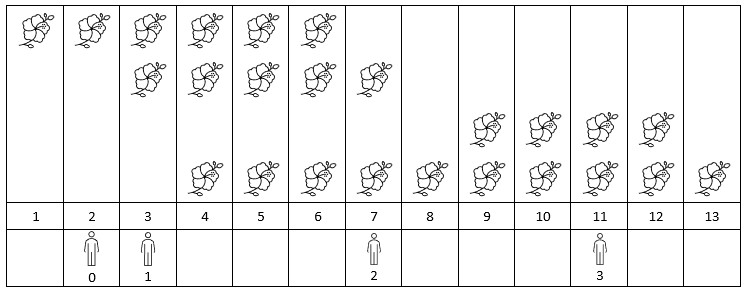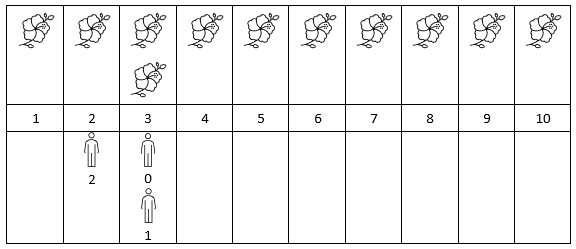2022-04-30 20:06:01
问题描述:
给你一个下标从 0 开始的二维整数数组 flowers ,其中 flowers[i] = [starti, endi] 表示第 i 朵花的 花期 从 starti 到 endi (都 包含)。同时给你一个下标从 0 开始大小为 n 的整数数组 persons ,persons[i] 是第 i 个人来看花的时间。
请你返回一个大小为 n 的整数数组 answer ,其中 answer[i]是第 i 个人到达时在花期内花的 数目 。
示例 1:

输入:flowers = [[1,6],[3,7],[9,12],[4,13]], persons = [2,3,7,11] 输出:[1,2,2,2] 解释:上图展示了每朵花的花期时间,和每个人的到达时间。 对每个人,我们返回他们到达时在花期内花的数目。
示例 2:

输入:flowers = [[1,10],[3,3]], persons = [3,3,2] 输出:[2,2,1] 解释:上图展示了每朵花的花期时间,和每个人的到达时间。 对每个人,我们返回他们到达时在花期内花的数目。
提示:
1 <= flowers.length <= 5 * 104flowers[i].length == 21 <= starti <= endi <= 1091 <= persons.length <= 5 * 1041 <= persons[i] <= 109
问题求解:
典型的区间修改,单点求和的问题,可以用树状数组高效求解。需要注意的是由于数据量过大,因此无法直接开数组,需要用哈希表对数据进行存储。
class Solution:
def fullBloomFlowers(self, flowers: List[List[int]], persons: List[int]) -> List[int]:
res = []
n = int(1e9 + 7)
def update(bit, idx, delta):
i = idx
while i < n:
bit[i] += delta
i += (i & -i)
def query(bit, idx):
res = 0
i = idx
while i > 0:
res += bit[i]
i -= (i & -i)
return res
bit = defaultdict(int)
for l, r in flowers:
update(bit, l, 1)
update(bit, r + 1, -1)
for p in persons:
res.append(query(bit, p))
return res